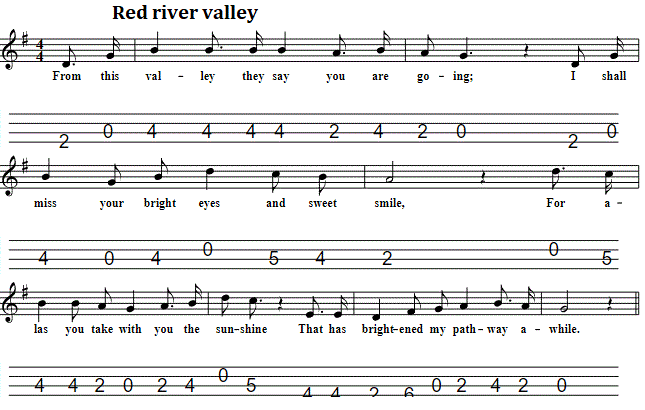Red River Valley lyrics and guitar chords
Red river valley tenor guitar / mandola tab in CGDA tuning included. Easy to play guitar chords. written by James Kerrigan 1896, the sheet music notes are also included here, The chords in the key of E Major are the same as what Michael Martin uses in his youtube video. Red River Valley Sheet Music And Tin Whistle Notes .
|
[D]From this valley they say you are going
We will miss your bright eyes and sweet[A] smile For they[D] say you are taking the[G] sunshine That has[A] brightened our path for a [D]while Come and sit by my side if you love me Do not hasten to bid me adieu But remember the Red River Valley And the cowboy who loved you so true Won't you think of the valley you're leaving Oh how lonely, how sad it will be? Oh think of the fond heart you're breaking And the grief you are causing to me As you go to your home by the ocean May you never forget those sweet hours That we spent in the Red River Valley And the love we exchanged mid the flowers |
Intro chords for Michael Martin version.
[E] [D] [B][E] [D] [B][D][E][A] [B] [E] [E]From this [F#]vall[G#m]ey they say [B]you are [E]going We will miss your bright eyes and sweet[B] smile For they[E] say you are taking the[A] sunshine That has[B] brightened our [F#m]path [D]for a [E]]while [E]Come and sit by my side [B]if you [E]love me Do not hasten to bid me a[B]dieu But re[E]member the Red River [A]Valley And the [B]cowboy who loved you so [E]true |
Red river valley tenor guitar / mandola tab in CGDA



